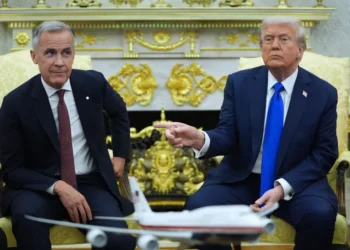Franklin Cudjoe, President of IMANI Africa, has shared his views on the NPP’s Solar Power Promise outlined in its manifesto, noting that the policy appears to address challenges associated with the existing Feed-in Tariff (FiT) rates under the Renewable Energy Act.
He explained that the current framework focuses solely on utility-scale renewable energy projects, leaving households with excess power unable to benefit from the FiT system.
Cudjoe emphasized that this limitation acts as a disincentive for the widespread adoption of renewable energy at the household level.
Additionally, he pointed out that the 10-year FiT period further discourages investors, as it does not align well with typical debt repayment schedules and project completion timelines.
He stressed the need for policy reforms to make renewable energy projects more attractive and accessible for both households and investors.
“The challenge with this promise is the additional expenditure on households to install the systems required to qualify for connection to the distribution grid. This can be a disincentive.
“The NPP plans to Roll out 2000 MW of solar power, aimed at reducing the cost of electricity. While solar energy constitutes less than 1% of the total installed generation capacity, the NPP intends to achieve this target by building local capacity, reducing import charges on solar batteries used for telecommunication, and providing fiscal incentives to green start-ups”.
Franklin Cudjoe
Franklin Cudjoe further observed that the NPP manifesto places significant emphasis on the development of solar home systems and mini-grids as a means to enhance renewable energy access.

He noted that the Ministry of Energy is currently implementing the Solar Rooftop Programme, which aims to accelerate the adoption of solar photovoltaic (PV) systems by households.
While acknowledging the program’s potential, Cudjoe pointed out that it faces notable challenges, particularly the issue of affordability, which limits its accessibility to many Ghanaians.
Despite these hurdles, he emphasized that the program represents one of the more practical and viable approaches to advancing the NPP’s renewable energy goals and increasing solar energy penetration in the country.
Cudjoe Highlights High Solar Costs
Franklin Cudjoe further noted that the cost of installing a standard solar home system is currently estimated by installers to be around GHC70,000, a price that is prohibitively expensive for the average public sector worker and many households.
He also highlighted the government’s utilization of the Green Climate Fund, investing approximately US$ 32 million into solar rooftop systems to support renewable energy initiatives.
According to Cudjoe, this investment represents the only practical initiative the government has undertaken to support and promote the solar home system sector effectively.

“Also, the government has built mini-grids in Lawra, Kaleo, and Bui to complement the existing generation capacity. The largest one is the Kaleo plant capacity is about 13MW and costs almost US$13 million.
“It is unclear how the government intends to achieve the 2000 MW target unless it is able to compute for all household purchases and utilizations of solar plants. Typically, they use the import report on solar PVs to estimate the total number of solar capacity added, however, this does not effectively measure utilization”.
Franklin Cudjoe
Cudjoe explained that the NPP plans to encourage the adoption of solar power through a net metering system, designed to incentivize households and other solar power producers.
He noted that under this system, users who generate excess solar power can feed it into the national grid in exchange for “credits.”
These credits can then be used to offset the cost of grid electricity during periods when their solar systems are not generating power, such as at night or during cloudy weather.
Cudjoe highlighted that this approach not only promotes renewable energy adoption but also ensures more efficient use of solar power, making it a mutually beneficial arrangement for both producers and the national electricity grid.
He emphasized that successful implementation of this policy could significantly enhance energy sustainability and affordability for households.



















